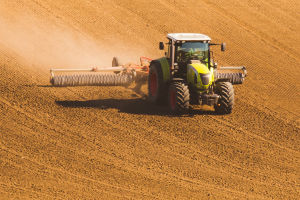Tractor
Agriculture is a series of hard work. Tractors are the most versatile agricultural machinery and can be used to perform a variety of agricultural tasks by simply replacing the working machinery.
Without tractors, farmers would not be able to complete large-scale agricultural work. Indeed, tractors are the driving force behind the work and greatly reduce the burden on farmers.
Since working machines are expendable, if they break down, they can be replaced with new ones; however, the tractor itself is a reliable machine that can last almost 20 years with proper maintenance. Tractor prices vary according to horsepower; there are large tractors in the two million dollar range and small tractors in the tens of thousands of dollars range.
The tractor is a combination of several parts, such as the engine, transmission system, travel system, steering system, braking system, electrical system, and the tractor's external hydraulic suspension system. The tractor is a year-round active multifunctional agricultural machinery. The rear of the tractor has a variety of interfaces that can be loaded and unloaded and replaced according to the purpose of the work.
Conventional farming cannot be done without plowing, and any agricultural land can be plowed with a tractor, which is one of the most important uses. Conventional tillage methods are plowing and rototilling. In comparison, plowing generally has a depth of 18-22 centimeters, some deeper, and generally buries the straw better; whereas, rototilling has a depth of generally 12-16 centimeters, which is too shallow to bury the straw effectively.
At present, due to the long-term use of agricultural land for rotary tillage operations, failure to deep plow, and deep pine operations, the soil's water storage capacity and fertility have declined, and the bottom layer of the plow has become increasingly hard, impacting the root growth of crops and affecting their yield.
In addition, tractors can be installed with balers, which can quickly pack harvested grass, straw, and other crop straw. The most commonly used balers are those for cylindrical packing, where hay is simply wound by rubber bands or rollers that wrap them tightly around the mechanism in the baler.
The biggest advantage of this method is the possibility of grass storage, with grass wrapped in cling film silage. Furthermore, we also need seeders.
Mechanical seeding operations are mainly carried out by using a tractor to pull a seeder. Through timely and correct sowing operations, we can improve the quality of seeding, ensuring that the seed germination and seedlings are on time and of good quality, which has a direct impact on agricultural production and harvest.
However, in the actual sowing operation, there are often some problems that affect the quality of sowing. In order to improve the quality of sowing, we need to understand the technical characteristics of the main working parts of the seeder and the requirements for a high-quality sowing operation.
The working parts of the seeder include a seed discharger, fertilizer discharger, furrow opener, seed delivery pipe, mulching and suppression device, etc.
The operation of the seeder should meet the requirements of agricultural technology: the sowing volume of the strip planter should meet the technical requirements, the row spacing should be consistent, the seeds should be evenly distributed in the field, the seeds should be sown in the wet soil layer and covered with wet soil, the sowing depth should be consistent and in accordance with the regulations.
The seed damage rate should be low, and the fertilizer should be applied below or to the side of the seeds when fertilizer is applied.
The requirements for the sower are the same number of seeds per hole, the seeds in the hole are not excessively dispersed, the sowing depth is consistent and in accordance with the regulations, and the seed damage rate is low. Precision seeders also require one grain per hole and precise plant spacing.


